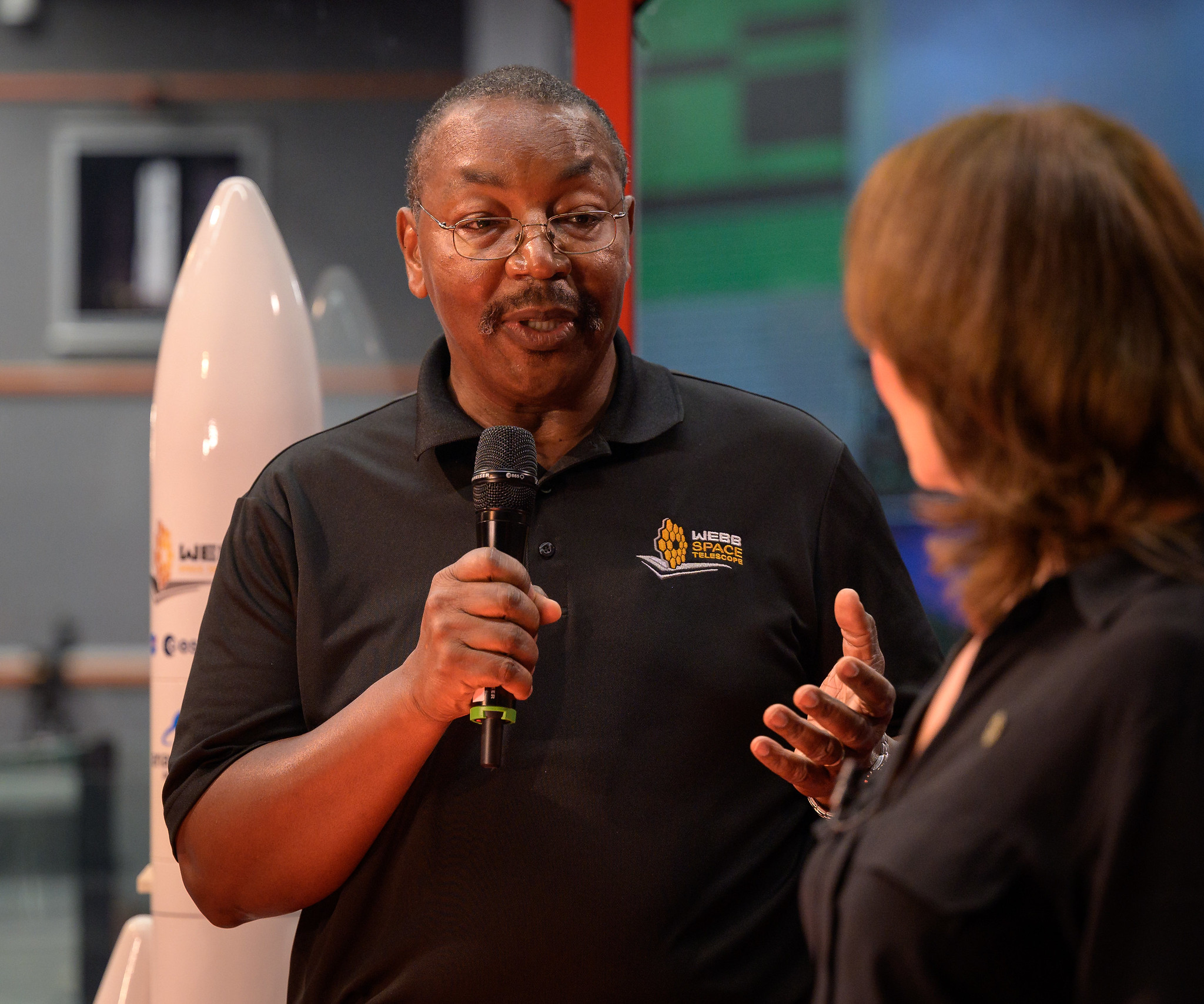NASA’s James Webb Space Telescope Program Director Gregory L. Robinson, along with other agency leaders, will be honored at the “Innovation&Equity 21: 50 Most Important African Americans in Technology” event in San Francisco on March 5.
“I congratulate our NASA leaders on the distinguished recognition,” said NASA Deputy Administrator Pam Melroy. “NASA is committed to developing and strengthening a diverse and inclusive workforce, which makes us all better, safer, and more innovative. These leaders’ hard work is putting that core value into action for the benefit of all.”
Robinson, the recipient of this year’s Roy L. Clay Sr. Technology Pinnacle Award, oversees the agency’s James Webb Space Telescope, the largest and most powerful space science observatory in history. He said the award highlights the significance of the most technologically sophisticated space science telescope ever built to explore the cosmos, as well as NASA’s efforts to promote STEM (science, technology, engineering, and mathematics).
In his Jan. 15 talk as featured speaker at the Innovation&Equity 21’s annual symposium, Robinson delivered a message of inspiration to students to pursue technology and science careers. Each Saturday in February, Robinson’s talk will broadcast at Innovation&Equity21’s website to engage students and expand their horizons in STEM professions.
“The James Webb Space Telescope is the most ambitious and complex exploration humanity has ever undertaken,” said Robinson. The observatory, which launched Dec. 25, 2021, reached its final orbital destination nearly one million miles away from Earth Jan. 24. It will now undergo a three-month process of aligning the telescope’s optics followed by two more months of calibrating the science instruments. Its first images are expected this summer.
Previously, Robinson was the deputy associate administrator for programs in the Science Mission Directorate at NASA Headquarters in Washington, where he assessed programs for technical and cost effectiveness, quality, and performance. He also served as deputy center director at NASA’s Glenn Research Center in Cleveland. He received undergraduate degrees from both Virginia Union University in Richmond and Howard University in Washington, and a master of Business Administration from Averett College in Danville, Virginia.
The Pinnacle awards event also recognize the 21st annual “50 Most Important African Americans in Technology,” along with the “BlackBio100,” and the “50 Most Important African Americans in Infrastructure” recognitions. The awards event will highlight the remarkable careers and accomplishments of high-profile leaders who have impacted the nation’s space program and inspired new generations to have technology and science careers.
Nine other NASA leaders also will be recognized at the gathering for their leadership contributions. “In addition to Robinson, the other ‘50 Most’ NASA selectees give powerful examples of excellence for contemporary and future engineering and science leaders,” said John William Templeton, organizer of the Pinnacle awards and “50 Most Important African Americans in Technology” event.
“Like the other honorees, the Pinnacle award honoree and 50 Most exemplify the broad range of talent and technical accomplishments among the 562,000 African Americans in technology nationwide,” said Templeton. “Four out of the 10 honorees are graduates from Historically Black Colleges and Universities (HBCUs).”
The additional 2022 NASA honorees are:
- Clayton Turner, director of NASA’s Langley Research Center in Hampton, Virginia, the site where the women made famous in the movie “Hidden Figures” calculated the trajectory for the first crewed American spaceflight
- Christyl Johnson, deputy director for technology and research investments at NASA’s Goddard Space Flight Center in Greenbelt, Maryland
- Vanessa Wyche, director of NASA’s Johnson Space Center in Houston
- Marcus Watkins, director of the NASA Office of JPL Management and Oversight at the agency’s Jet Propulsion Laboratory in Southern California
- Kelvin Manning, deputy director of NASA’s Kennedy Space Center in Florida
- Barbara Brown, director of exploration research and technology programs at NASA Kennedy
- Tamiko Fletcher, chief information security officer at NASA Kennedy
- Karla Smith Jackson, senior procurement executive, deputy chief acquisition officer, and assistant administrator for procurement at NASA Headquarters
- Retired U.S. Air Force Gen. Lester Lyles, chair of the NASA Advisory Council
Past NASA ‘50 Most’ honorees include former NASA Deputy Administrator Frederick Gregory in 2005 and former NASA Administrator Charles Bolden in 2011.
This year, the Pinnacle awards also will be presented to Gen. C.Q. Brown, chief of staff of the U.S. Air Force, and Shawnzia Thomas, chief information officer for the state of Georgia. The awards were founded in 1998 by Roy L. Clay and Frank S. Greene, who are Silicon Valley Engineering Hall of Famers.
For more information about NASA’s diversity, equity, inclusion, and accessibility public-facing initiatives, visit:
https://www.nasa.gov/mission-equity
-end-

























